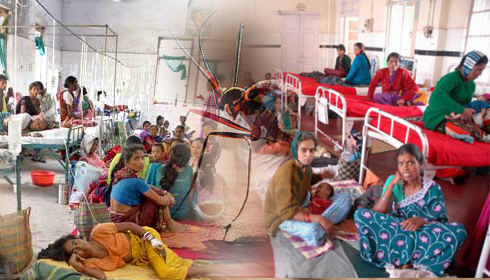
Dengue Outbreak in Bangladesh Surges with 1,221 New Cases in 24 Hours
With 1,221 fresh cases recorded in just 24 hours as of September 29, 2024, Bangladesh is suffering a major dengue fever epidemic. With 158 deaths noted, the overall number of cases this year was 29,786 brought on by this increase. The epidemic highlights a developing public health issue as the nation works to properly regulate virus propagation and mosquito numbers.
The notable rise in dengue incidence today compared to previous years raises questions about the efficacy of continuous public health campaigns. Younger age groups show the most cases: 201 cases in the 21-25 range, and 184 cases in the 16-20 range. Fascinatingly, only 11 cases have been recorded among the elderly, a group often more at risk for infectious diseases. Men are more susceptible, according to gender statistics; among the recently recorded cases, 774 men and 449 women. This trend corresponds with earlier research indicating men are more likely than women to have dengue.
When looking at India's dengue situation, similarities show up, emphasising the difficulties both countries face. With over 15,000 instances recorded by India's Ministry of Health and Family Welfare this year, the country boasts a significantly lower rate than Bangladesh. This disparity can be attributed to the two nations' different public health reactions and vector control policies.
Both nations' dengue epidemic has resulted from monsoon rains, which offer perfect breeding grounds for the Aedes aegypti mosquito. Like in Bangladesh, the monsoon season in India from July to November usually results in increased illnesses. India's reduced case count notwithstanding, its dengue case fatality rate has stayed constant at about 1%, while Bangladesh's current rate is about 0.53%. This could imply, even despite Bangladesh's rising case count, a possible improvement in clinical response and treatment approaches.
Furthermore, the age-related patterns of dengue cases differ between the two countries. The older population in India has experienced a significant increase in dengue cases, potentially due to increased mobility and exposure to high-risk areas. In the meantime, the younger generation in Bangladesh has suffered the most from the epidemic. This demographic variation demands focused public health campaigns to safeguard the most vulnerable groups in every nation.
Already strained by the COVID-19 epidemic, Bangladesh's healthcare system has battled to handle the rising dengue caseload. Further taxing the response to the epidemic are overcrowded hospitals and inadequate healthcare capabilities further tax the epidemic response. India's comparatively lower case count, on the other hand, can be ascribed to its more extensive public awareness efforts and more thorough vector control initiatives. Though on a smaller scale than Bangladesh, India's healthcare system also struggles to handle seasonal outbreaks.
With both the number of cases and deaths hitting unheard-of records this year, Bangladesh's dengue fever epidemic has gotten to critical proportions. In order to lessen the impact of the outbreak, Bangladeshi public health officials must concentrate on improving vector control techniques, raising public awareness of preventative actions, and making sure that medical institutions are well-equipped to manage the growing patient load. Drawing on India's response systems—including better vector management and public education campaigns—could provide insightful analysis as Bangladesh negotiates this public health catastrophe.
Given that both nations continue to battle the annual recurrence of dengue fever, the significance of this issue is paramount. But the current extent of the epidemic in Bangladesh calls for quick and strong intervention to stop more deaths and prevent the virus from spreading.